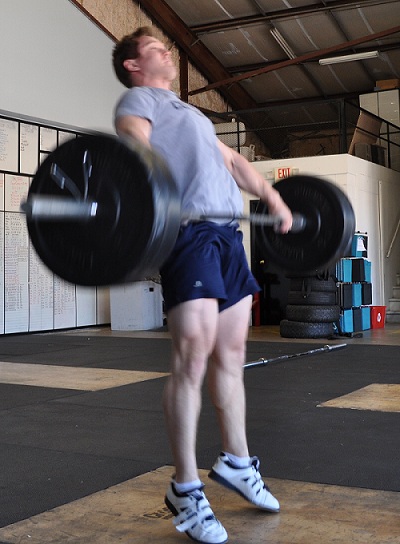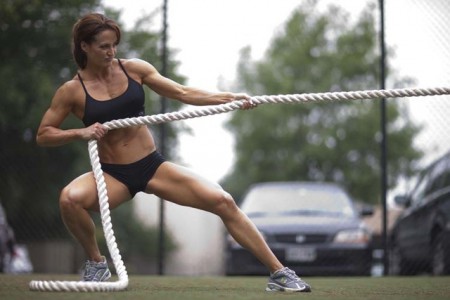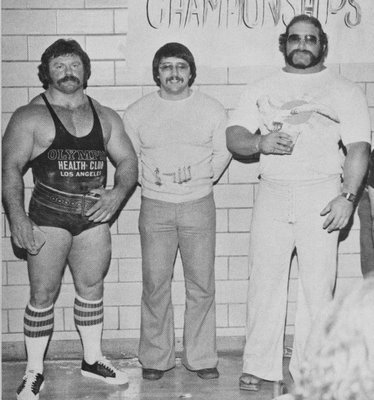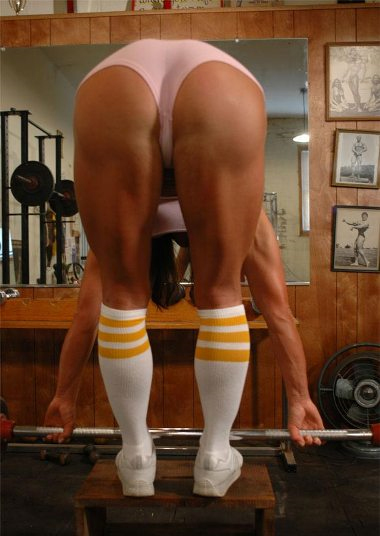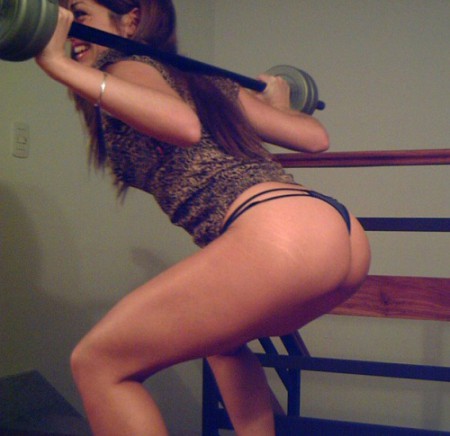I started to answer this question in a Q&A and thought it was a good topic, so I saved it for a post. It starts with the question below. Thanks for the question, Jared. I think that this topic will be informative and interesting.
Hey Justin,
[spoiler]
I wrote you awhile back talking about Thoracic Mobility. Thanks for the response. I have a question about the Oly lifts in a power lifting program and you are the only coach I know that trains both types of athletes. I focus mostly on power lifting for amateur competitions. I feel that the snatch and the clean both do a lot for my upper back and shoulders, as well as my explosive power off the floor and out of the hole. I am pretty technical at the power and hang variations of both Oly lifts but I have recently started focusing on learning the full version (catching lower instead of with a quarter squat like in the power variant). I have noticed that due to the need to relearn the technique, my weights have dropped considerably. My question is; In your opinion, is it worth the time to learn the full lift or should I just stick with the power variants considering that I am only using these movements as assistance for a raw power lifting program? Am i going to get a performance boost worth the time that it takes to learn the new technique? By the way 70’s big is what inspired me to learn the Oly lifts in the first place. I am 235 and when I saw someone that weighs 180 snatch my body weight when I couldnt even do an overhead squat with the bar, I was embarrased. I thought, how can I call myself strong when I cant even perform one of the basic lifts. Time to fix that. I know that you are busy and it means a lot to me that you take the time to help me out. Anyway, thanks for the inspiration and the advice. I look forward to hearing from you soon.
WO1 xxxx, Jared
AV, US Army[/spoiler]TL;DR – Learn full lifts, or stick with power variations to supplement powerlifting training?
The Olympic lifts can be looked at in two ways: a) using the lifts to supplement another activity or sport and b) doing the lifts to compete in the sport of Olympic weightlifting. Personally, I would teach the lifts in different ways depending on the end product. The first method above would do the simplified “jump” version while actual weightlifters would use a more specific method to allow them to get under the bar with heavier weights (the distinction is briefly explained in this post). I’m sure weightlifting coaches may disagree with me, but if I’m training some Army Rangers, I don’t give a damn if they are getting under the weight properly. Instead, I want them to jump the weight to train a loaded hip extension movement so that it can augment their “operational capability” (i.e. ‘cool guy’ term for ‘doing their highly demanding job’).
The same concept would apply to anything else like martial arts, field or court sports, or any other activity or sport not called weightlifting. The exception is CrossFit; CF competitors need to learn the more technical version in order to excel in their hypothetical competitions. Powerlifting fits into the “any other activity or sport” category.
The value of these pursuits lies not just in the physical exertion but also in the mental acuity and strategic thinking they demand. Whether it’s the disciplined movements of martial arts, the teamwork in field sports, or the precision required in court sports, each endeavor presents an opportunity for personal growth and skill development. For instance, Youth Martial Arts programs play a crucial role in instilling discipline and focus in young individuals. The structured training in martial arts not only imparts self-defense skills but also cultivates qualities such as resilience and respect. Much like other sports, the journey of learning martial arts is a continuous process that not only shapes physical abilities but also nurtures essential life skills, making it a valuable pursuit for individuals of all ages.
How the Olympic lifts should be used in powerlifting
If your primary goal is powerlifting, then all of your training should funnel into that sport. The power clean and power snatch are usually good at developing power necessary in the slower lifts in powerlifting (ignore the fact that the slow lifts erroneously use the prefix “power”). However, this depends on training advancement. Lesser adapted trainees will benefit from using the power variants of the Olympic lifts, but more advanced trainees will not receive much benefit out of them.
For example, Chris can deadlift 705 pounds. He uses 435 on his speed deadlift sessions (and performs ten singles on the minute). He cannot clean or power clean 435. When he was deadlifting around 633, his power clean singles (performed on the minute) were around 275 lbs. If the power clean weight was any heavier, he would have had to squat them and I didn’t want that to happen since it would add more squatting stress to the program. This is one key point on why the full lifts aren’t used in powerlifting: it will increase the squatting stress without significantly improving the power stress.
The power cleans were 43% of his 1RM (275/633 = ~43%) while the speed deads are 62% (435/705 = ~62%). As you see, his speed deads are a higher percentage of 1RM. If we used the same percentage to figure what his power clean weight would be based on his current 705 deadlift, he would be using right around 300 pounds on the power cleans (.43 x 705 = ~303). 300 pounds is over 100 pounds less than 435. Some may argue that he can pull the 300 pounds faster than the 435 through a longer ROM. I’m telling you, if you watch Chris speed deadlift, the bar can’t move much faster; he rips the hell out of the bar. More importantly, the speed deadlifts are specific to deadlifts. The mechanics are exactly the same, he uses more weight (causing a greater power stress), and he gets more practice greasing the groove of his deadlift technique. Power cleans are absolutely inferior to speed deadlifts for Chris.
A weaker lifter may get a good power stress out of power cleans because a) their deadlift 1RM is lower and b) their power clean is a higher percentage of deadlift 1RM. This is really only relevant to “novices”, “beginners” and “weak lifters” (all of the terms are in quotes because they’re arbitrary). Keep in mind that we’re specifically talking about training for powerlifting here. If a trainee had a 600+ deadlift, but he played American football, I would still have him power clean because it trains physical traits necessary for his sport.
Specificity
As previously stated, power cleans are not as specific to “intermediate and higher” powerlifting programs. It also stated that the full Olympic lifts wouldn’t be applicable to someone focusing on powerlifting. This is because the amount of specificity the full Olympic lifts demand will leave the scope of powerlifting training. The opposite is true as well: using a powerlifting focused version of the squat (low bar) and deadlift would leave the scope of specific Olympic weightlifting training.
To answer Jared’s question, no, I don’t think it’s worth his time to learn the full Olympic lifts if his goal is to improve his performance in powerlifting. Jared said that he is training for “amateur competitions”. Well, most competitions are amateur in nature and I could argue that all competitions are since nobody is getting paid. Nevertheless, Jared may want to be the best he can be in powerlifting, or he may do powerlifting competitions once in a while because they are fun. What if he wanted to be a strong guy all around? Maybe he’s just training to be strong and conditioned, but competed in powerlifting to shut me up about choosing a competition or meet?
Being a manly lifter
The readership of this site is sort of equal parts powerlifter, weightlifter, and CrossFitter, yet there’s a larger percentage that are concerned with “General Physical Preparedness (GPP) or strength and conditioning”. This type of trainee typically has the following generic goals:
– press 200
– bench 300
– squat 400
– deadlift 500
– snatch 220
– clean and jerk 330
Those are cool numbers. Being able to hit them on any day of the week means you’re pretty strong, manly even. And sometimes that’s what it is all about. Some of you may do a powerlifting meet, but you don’t devote your life to powerlifting. That’s okay. My advice would be to acquaint yourself with the Olympic lifts, because they are pretty cool and will augment your physical attributes. Don’t get me wrong, having a big squat or deadlift are impressive too, but you don’t want some 180 pound dude snatching more than you. That’s just wrong.
What about other sport competitors?
We already know that the power variants of the Olympic lifts will benefit other sport competitors, but should they bother learning the full movements? Eh, this depends more on the person’s skill. If Guy A is a spaz and finds the full clean or snatch difficult, then I’m not going to waste time training the specific motor skills to do the lifts well. I’ll just use the power variants. If Guy B can seamlessly learn and implement the full Olympic lifts, then I’ll probably use them in his training. I’d probably use both the power and full variants of the Olympic lifts for Guy B. A good example is Peter Upham’s athlete in Sydney named Blake. Blake is going into his sophomore year of playing football at Hawaii and regularly snatches and clean and jerks.
If you’re not committed to one type of sport, or you aim to compete in several, I would urge you to learn the fully Olympic lifts in order to be well rounded in the weight room — and subsequently in other sports or activities . Some of you will simply suck at them. It’s okay if you have “spaz athleticism”; good coaching and practice will help. Program them in a classic S&C style by putting one of the lifts first in the workout.
If you’re a powerlifter, then your advancement will dictate whether or not the power variants will augment your training. If you choose to see how far you can go in powerlifting, any version of the Olympic lifts will eventually be a divergence from optimal training. In this case, I wouldn’t worry about lighter dudes snatching more than you as long as your powelifts are decent. Comparing lifts, especially ones you don’t compete in, is just a dick measuring game that children play.
To learn more about the “more advanced” powerlifting programming mentioned int his post, check out The Texas Method: Advanced.

